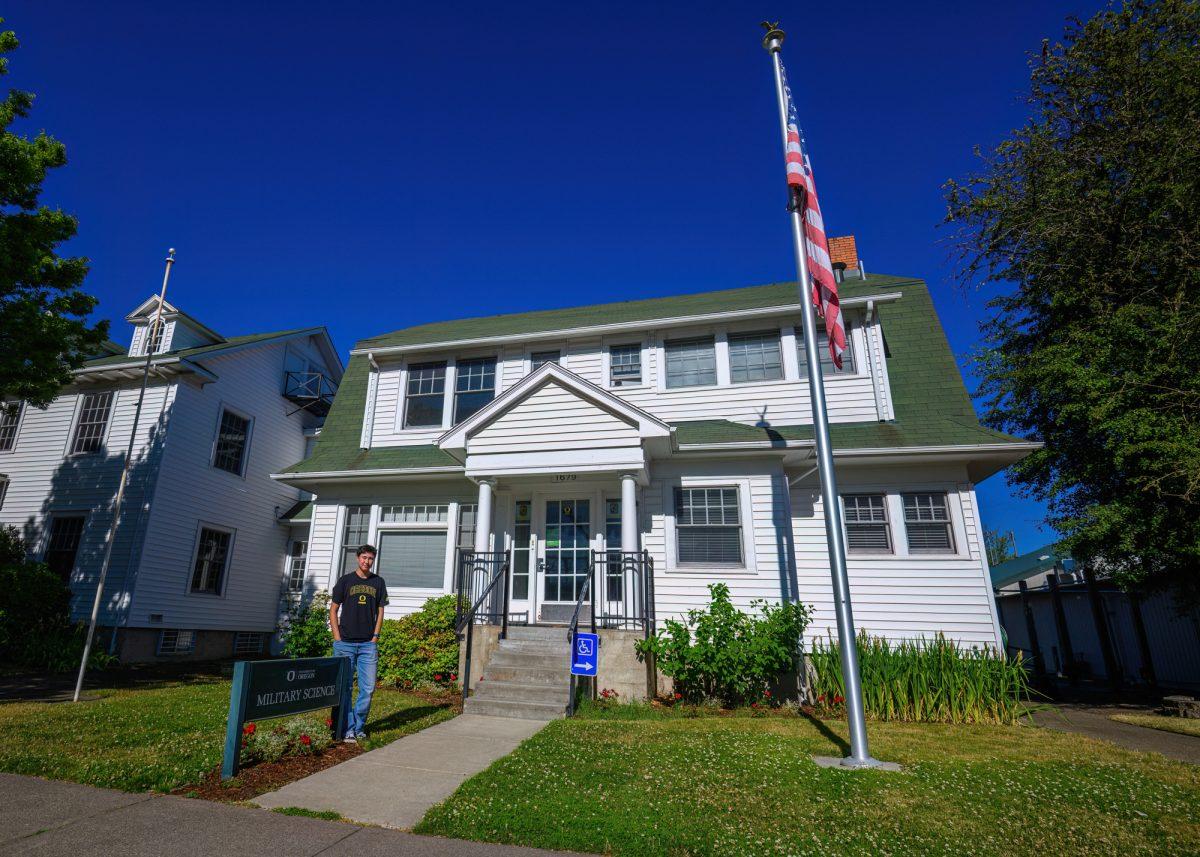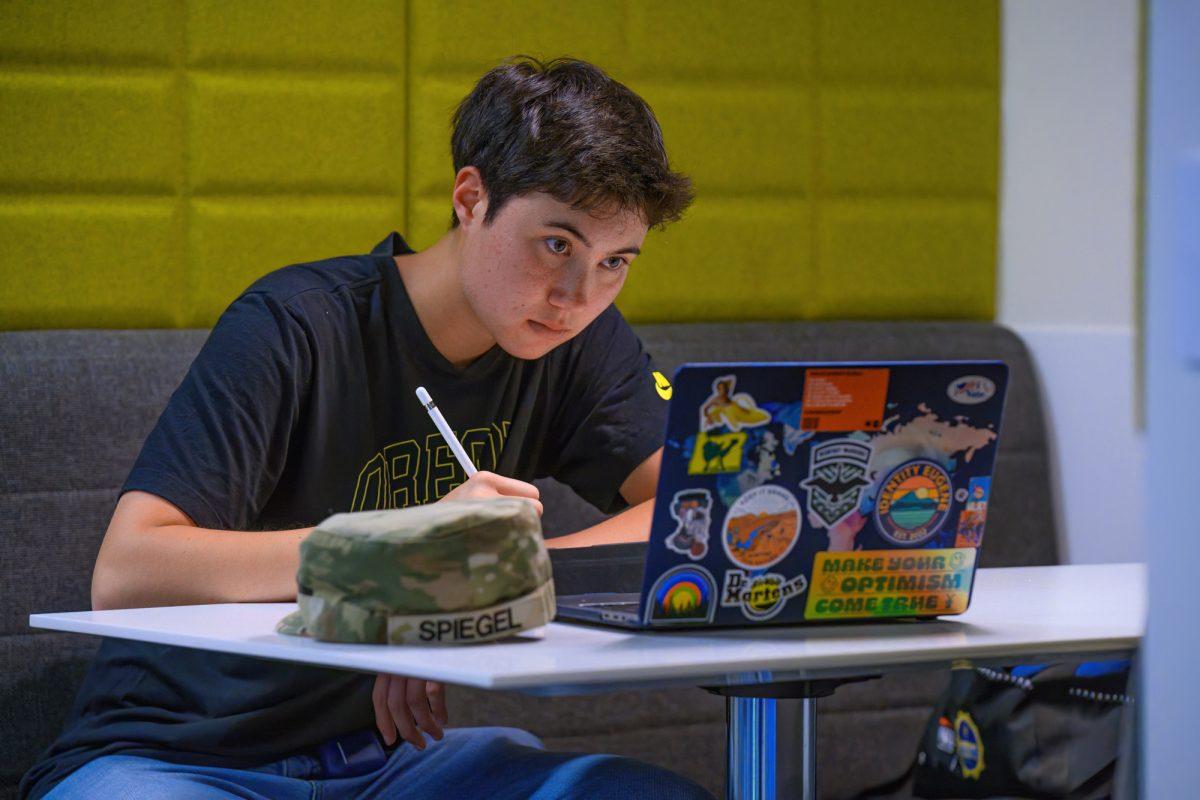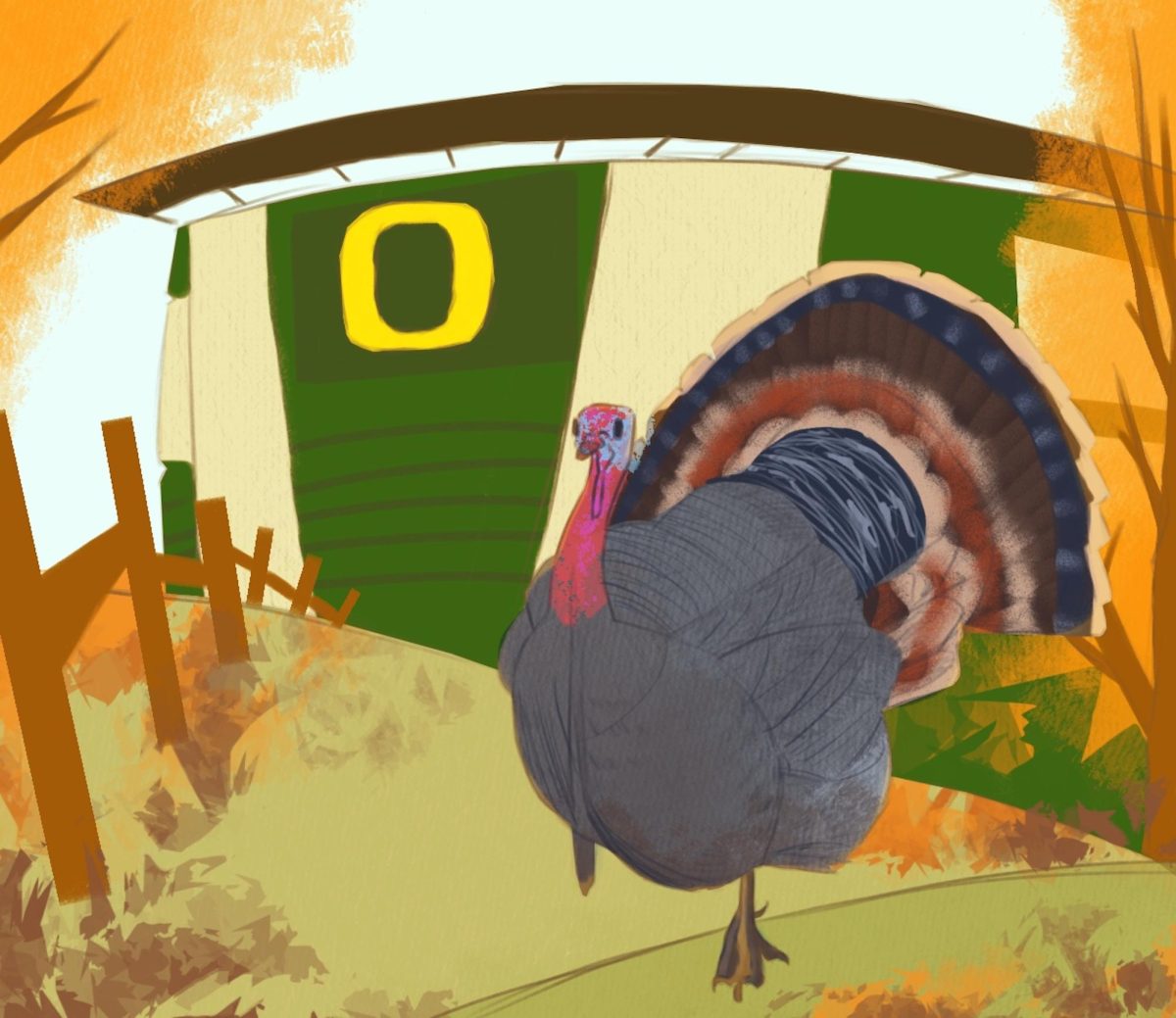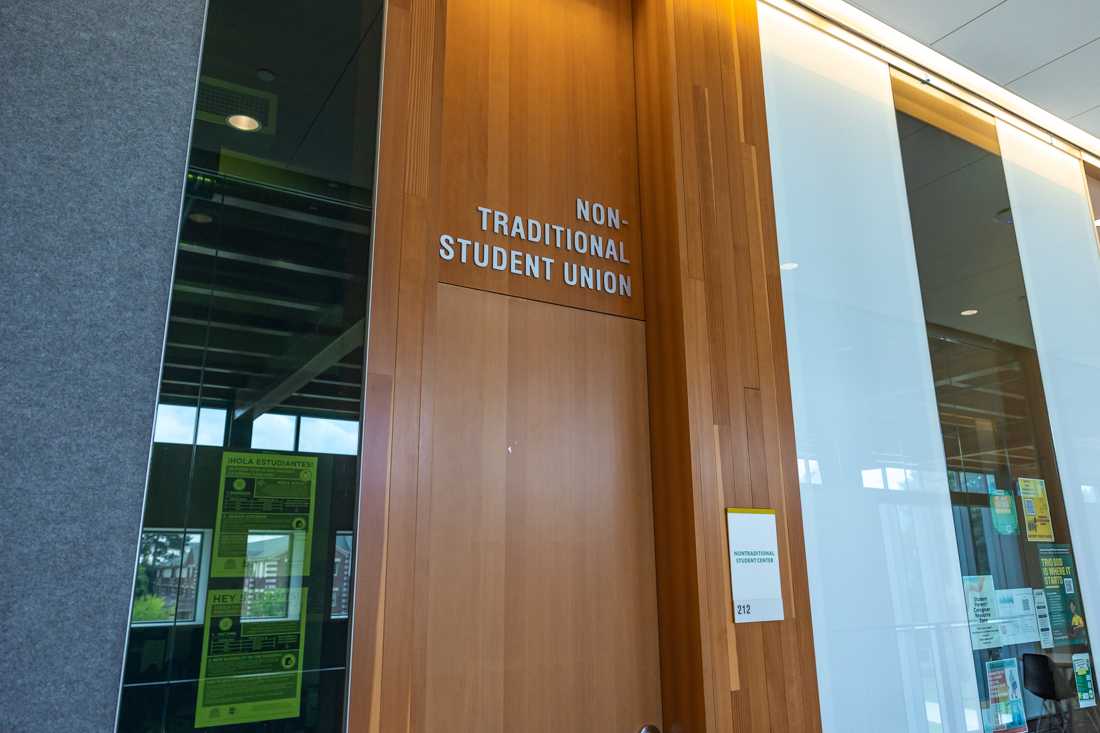When thinking of the Reserve Officers’ Training Corps, images of Vietnam War era protests and Cold War draft mobilizations might come to mind. They did for me until while strolling along Agate Street recently, I saw a white house with a ‘Military Science Department’ sign out front. The University of Oregon has an active ROTC program associated with this department which allows students to prepare for their military careers while pursuing academic degrees.
“UO Army ROTC has been active since 1916,” Enrollment Officer Roy Susuico said. The current student “cadre” here consists of 38 cadets, with male cadets outnumbering females by about two to one. Susuico, a UO alum and former ROTC cadet, is from Guam. He went on to serve in the Army Reserves for 25 years, retiring with the rank of lieutenant colonel.
The ROTC has been in existence since the Civil War. Its purpose is to train college and university students who then graduate as commissioned officers and go on to serve in various branches of the United States military. A majority of current enlistees in all of the branches were initially ROTC cadets. The training includes both academics, which is what the military science department is for, and physical and skills training — akin to traditional boot camp, but spread out over the course of the typical four-year undergraduate experience.
Jaime Spiegel, a junior majoring in human physiology, was attracted to the ROTC because of scholarship opportunities. She plans on enlisting after graduation and becoming a pediatric surgeon. Spiegel also is intending on serving a full career in the military.
Chance Day-Spicer, a new graduate with a degree in general social sciences, currently serves as the UO ROTC’s cadet public affairs officer. He plans to “make a career out of the National Guard while also serving in either law enforcement or firefighting.”
Cadets conduct routine physical training just outside of Hayward Field. They also engage in exercises in Jasper Park. These include skills such as range finding, running situational training exercises and other practicalities of potential future field deployment. Spiegel goes to Clackamas regularly to train with the Oregon Army National Guard. Additionally, there are periodic ‘cadet summer trainings,’ where cadets go to various military bases around the country such as Fort Knox, Kentucky for a more intensive and immersive learning experience.
A commonality among individuals involved in the ROTC is family who have been in military service. This is true of both Spiegel and Day-Spicer. Spiegel, who is Korean-American, has had relatives active in both the US and South Korean military. A future posting in South Korea is a possibility for her, given her dual language proficiency. Day-Spicer said that a majority of his family has served, including his father.
Both Spiegel and Day-Spicer said that the camaraderie of ROTC is a big plus. Spiegel describes it as a ready-made family that will always be there throughout her life.
Any student can enroll in 100 and 200 level courses within the military science Department without any involvement or commitment to the ROTC. So, if you’re looking for some interesting two credit electives, you might want to do some reconnaissance in that sector.
You may occasionally see young people around campus walking to class wearing full camo combat fatigues. These aren’t just students with a martial sartorial aesthetic, but rather ROTC cadets going about their academic day like the rest of us. One difference being they are preparing for time in the military service, someday or somewhere — should Uncle Sam issue the command.
Cadet Jamie Spiegel studies at a booth in the EMU after class. The University of Oregon Army ROTC is a program designed to recruit and develop students into future Army Officers. (Eric Becker/Emerald)














